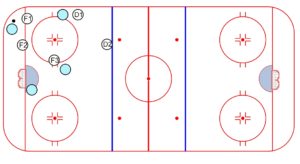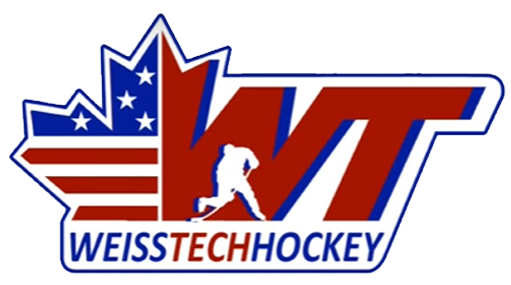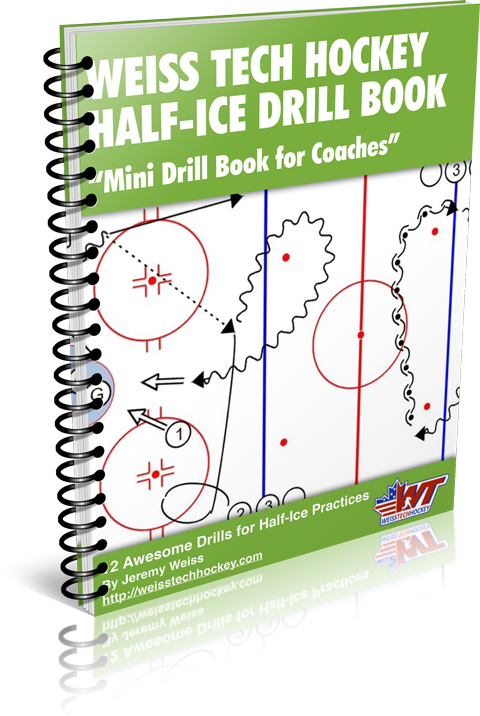USA Hockey’s New Icing Rule, and How it Affects your Power Play
The online hockey world is buzzing with USA Hockey’s new icing rule, announced last week, which eliminates icing while a team is on the penalty kill. This is the first of two posts that will outline what I feel are the “key game changers” that coaches should be mindful of as they prepare for the 2017/18 season. In this post we will address the Power Play, and in a couple of days we will hit the Penalty Kill.
UPDATE: You Can Check Out the Penalty Kill Post Here >>
Let’s Start with the Rule Change Itself
Here’s a summary of the rule change, taken from the USA Hockey website:
USA Hockey has modified its playing rules for the 14-and-Under age classification and all younger age classifications (youth and girls) to no longer legalize icing while a team is shorthanded. Beginning with the 2017-18 season, if a team ices the puck while shorthanded, it will result in a whistle followed by a defensive-zone faceoff. The team that commits an icing infraction will be allowed to change lines and/or players prior to the defensive-zone faceoff.
The rationale behind this rule change is twofold:
First, and most importantly, the change will encourage greater skill development for 10U, 12U and 14U players. These young athletes are in their prime skill development windows and will benefit greatly from the increased emphasis this rule change places on promoting puck possession, puck protection and play-making (as opposed to merely firing the puck down the ice, which is a low-skill tactic). Second, the change prevents a penalized team from gaining an exception to a rule (icing) that is in effect while teams are at even strength.
Advantage: Power Play
In my opinion, this rule change will play heavily to the power play’s advantage, especially at the beginning. However, I believe we will see penalty kills become more accustomed to the rule change, and the advantage will lessen over time. We’ll discuss some of the “key game changers” for killing penalties in the next post.
Good Power Play Tactics are Still Good Power Play Tactics
I also want to make it clear that good power play tactics are still good power play tactics, even under the new icing rule. We still want to be quick on loose pucks, outnumber the puck carrier whenever we don’t have the puck, be selective about when we shoot, and we definitely still want to follow our 5 steps to a successful power play:
- Get the zone
- Get the setup
- Get the shot
- Get the rebound
- Get back into the setup!
However, there’s one thing that, until now, hasn’t played much of a role in the power play… FORECHECKING.
Power Play Forecheck… GET AGGRESSIVE!
Under the old rule, there wasn’t much time or opportunity to execute a power play forecheck. As soon as the other team got the puck, it was a quick slap out of the zone, and you were back into your breakout. With the new icing rule, I see the forecheck as being the main difference for power play execution, and I propose getting REALLY aggressive both in setup and in execution.
An aggressive forecheck can be difficult to break out against 5 on 5, but even more difficult when down a man. On a power play, your team has numerical advantage, so make good use of it! Obviously, systems selection will vary from team to team, based on age, skill level, and team make-up. So, feel free to tweak or adjust my suggestions to fit your program.
2-1-2 and 2-2-1 “Torpedo”
 I suggest running an aggressive 2-1-2, but giving the strong-side defenseman license to pinch. The setup starts as a 2-1-2, but transitions into almost a 2-2-1, “torpedo” style of forecheck. Again, the intent is to put extreme pressure on (and outnumber) the puck carrier deep in the zone, while taking away the mid-level passing options (boards and middle ice) with the 3rd forward and strong side defenseman.
I suggest running an aggressive 2-1-2, but giving the strong-side defenseman license to pinch. The setup starts as a 2-1-2, but transitions into almost a 2-2-1, “torpedo” style of forecheck. Again, the intent is to put extreme pressure on (and outnumber) the puck carrier deep in the zone, while taking away the mid-level passing options (boards and middle ice) with the 3rd forward and strong side defenseman.
Running it this way will make a tough situation even worse for the team killing the penalty. I believe it’s a great way to take advantage of your numerical advantage, and a cool opportunity to introduce a bit of a different look to your forecheck.
Transitional Play
Lastly, you may want to work on transitioning in and out of this forecheck. Under the old rule, most of the time you were working your way into your power play setup either from a zone entry, or from quickly jumping on a rebound that careened into the corner.If you lost the race to the puck, it was iced, and you’d start over with a zone entry.
With the new rule, you will have some new situational circumstances, and you’ll need to be able to go from power play setup, to forecheck, then back into the power play setup once you’ve regained possession. So, consider practicing these transitions regularly.
The Unknown
It will be interesting to see what new situations present themselves as this rule begins to be implemented. There will undoubtedly be more to add to this list. Keep me posted during the season, and feel free to post any additional insights in the comments below!






